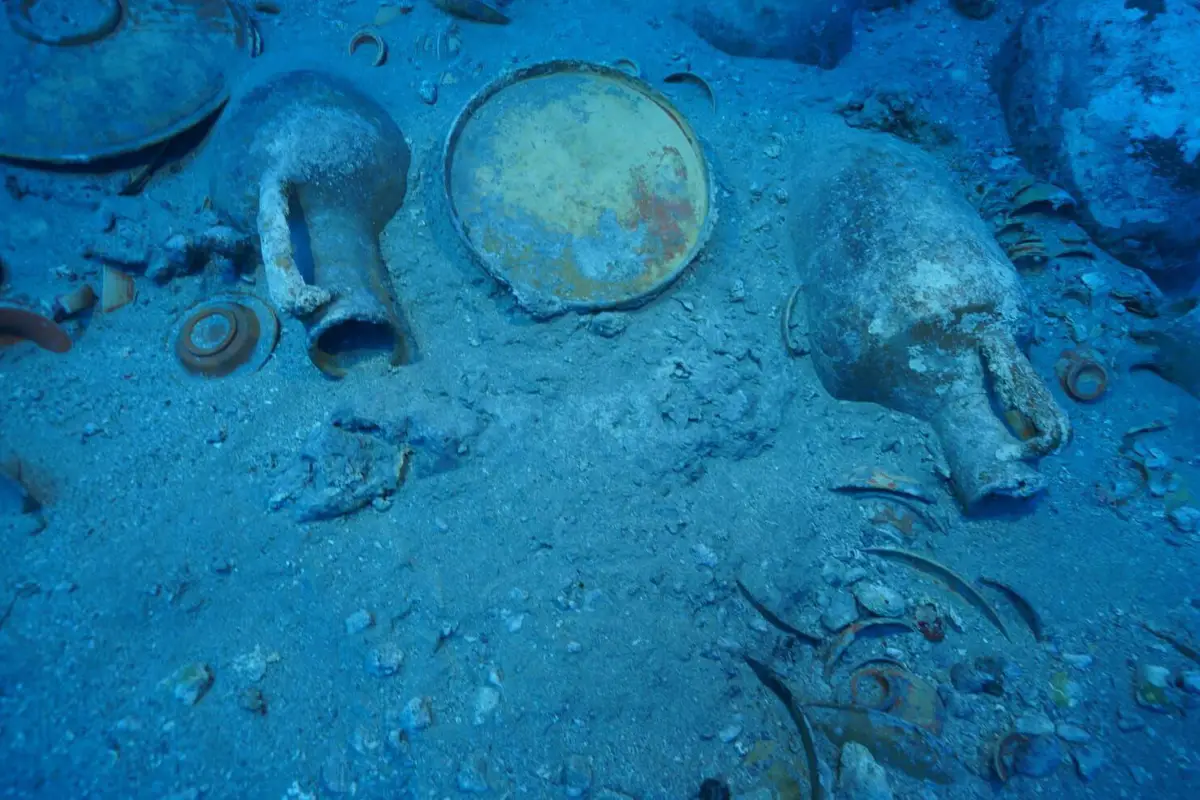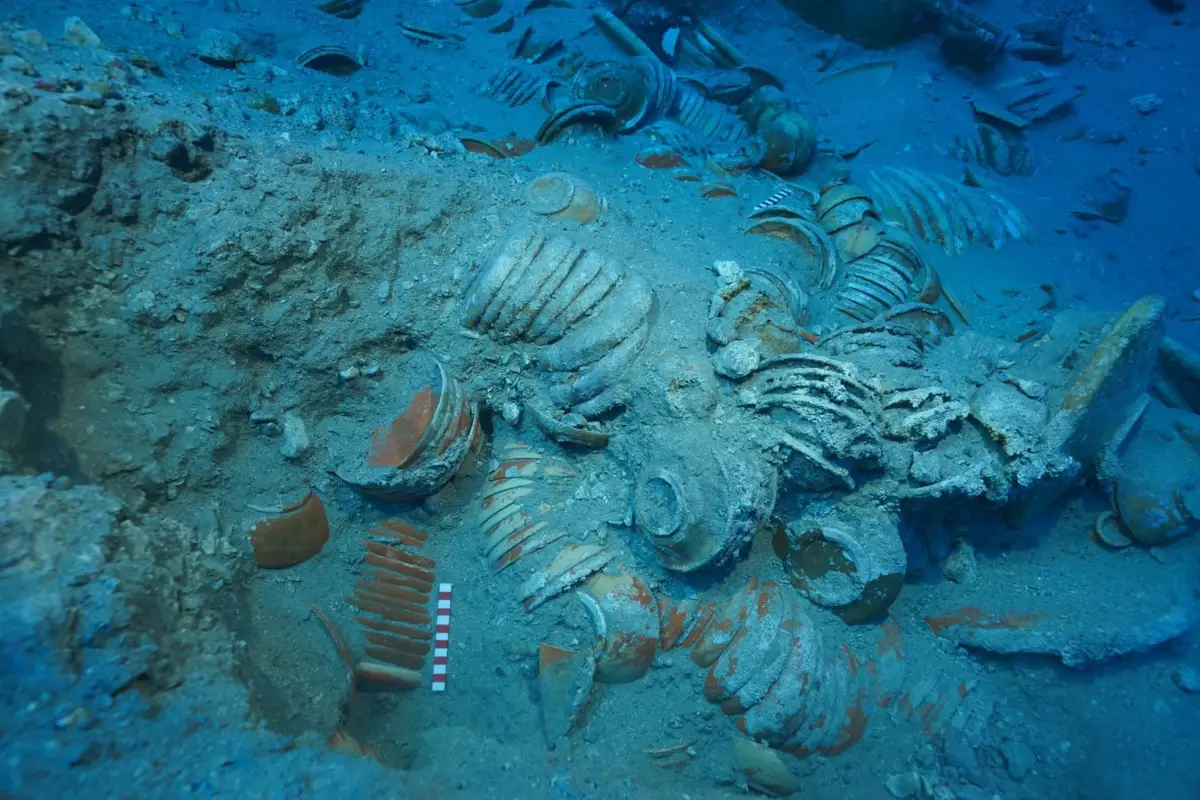A recently discovered shipwreck off the coast of Adrasan, Turkey, has yielded a collection of ceramic treasures dating to the Late Hellenistic–Early Roman period.
Located at a depth of up to 46 metres, the vessel was found to contain a large cargo of ceramics items still perfectly stacked in their original position, including bowls, plates, and pots.
According to Türkiye’s Ministry of Culture and Tourism, the ceramic items were coated in raw clay, providing a remarkable level of protection that has preserved even the finest details and decorative elements, despite resting on the seabed for over 2,000 years.
The discovery not only provides rare intact ceramic wares for studying trade and consumer goods during the classical period, but also the processes entailed for widescale manufacturing and packaging.
Excavations of the wreck are being conducted as part of the Ministry’s Heritage for the Future, a wide-scale project over four years to map and document Türkiye’s archaeological heritage.

Over 400 wreck sites have already been documented between the ancient city of Patara to the west and Mersin to the east, suggesting a rich trading route across Türkiye’s Mediterranean Region.
According to Minister Mehmet Nuri Ersoy, the artefacts are currently being carefully preserved at Türkiye’s Regional Restoration and Conservation Laboratories. He added that every shipwreck represents “a new doorway into our past beneath the sea.”
Minister Ersoy highlighted that Türkiye is no longer merely a spectator in the field of archaeology but is now playing a leading role in driving discoveries through advanced science and technology.
Selected items from the recently discovered shipwreck will join other artefacts in a planned Mediterranean Underwater Archaeology Museum in the Kemer Idyros region.
Header Image Credit : AA
Sources : Anadolu Ajansı







